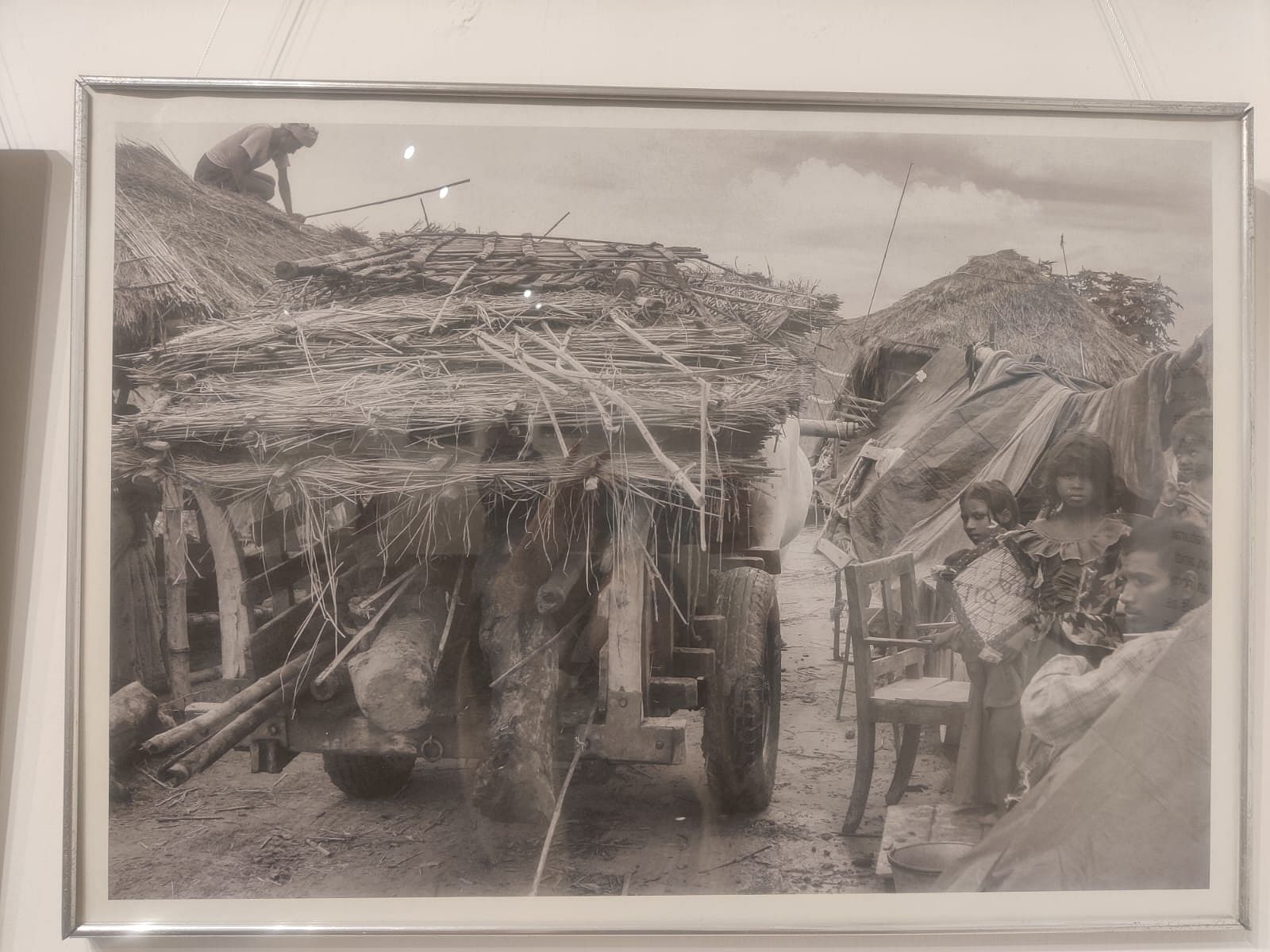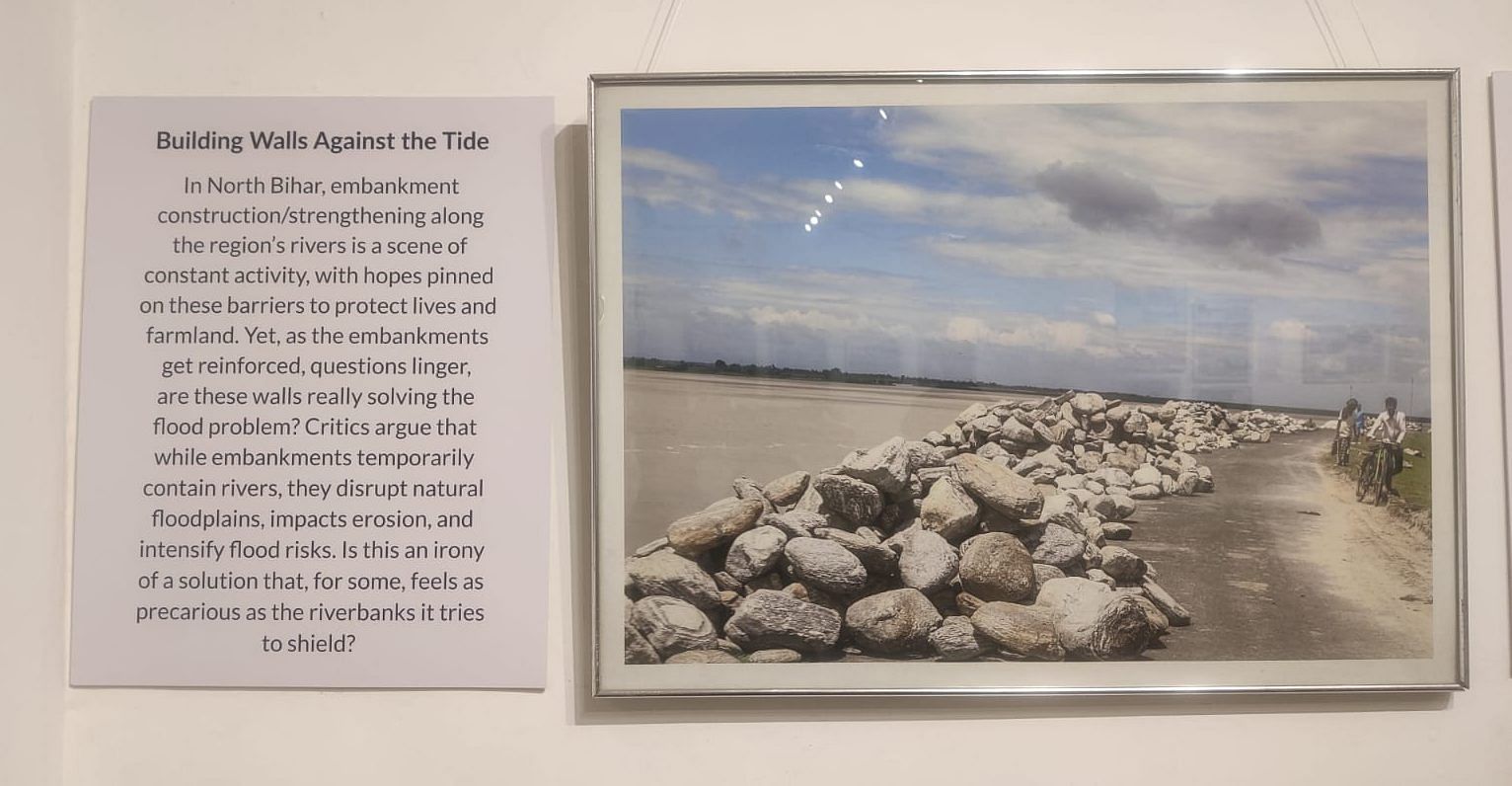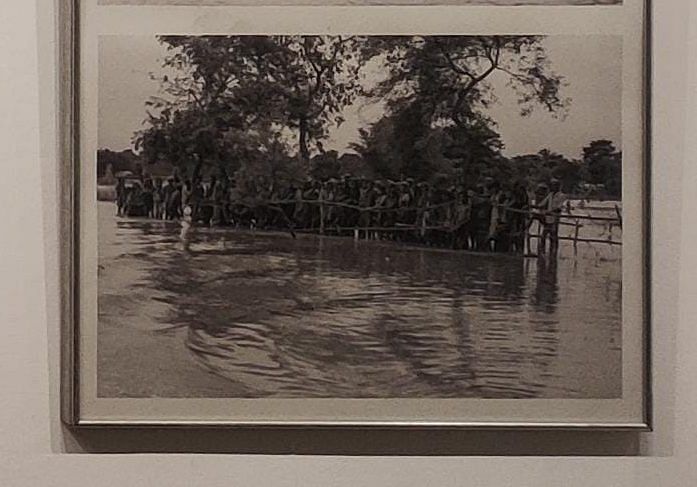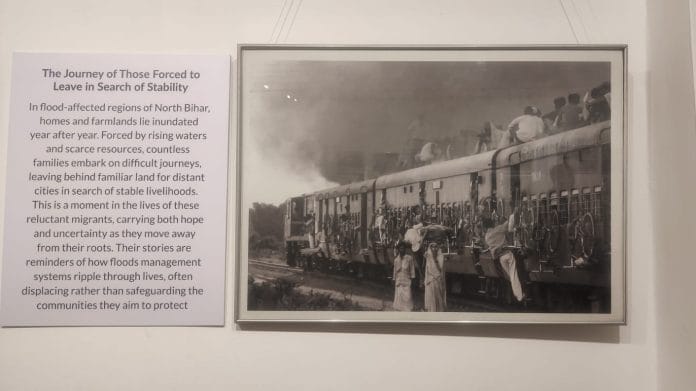New Delhi: Villagers in Bihar’s Supaul district, surrounded by the Kosi river in spate, queue up to be rescued. A family loads their possessions onto a boat. When photographer Eklavya Prasad documented the harsh realities of North Bihar’s floods through his lens, he was met with bitter sarcasm. “Floods in 1954 lasted for four days. Now they last for four months,” villager after villager told him.
For nearly two decades, Prasad has wielded his camera like a storyteller’s pen, capturing untold tales of resilience and despair from the flood-ravaged lands of North Bihar. This visual chronicle of lives submerged yet enduring will be on display at Delhi’s India International Centre until 12 December.
His work lays bare a truth far more harrowing than statistics can convey—a legacy of neglect, where floods have transformed into prolonged nightmares.

Beyond inundation, man-made barriers
Prasad aims to highlight the failure of flood management practices through his photographs. Since 1954, embankments have been built along flood-prone rivers, but these barriers have done little to mitigate the crisis, he said.
“During one of our surveys, villagers reported experiencing nearly 60 flash floods in a single year,” Prasad told ThePrint. “These floods weren’t caused by major rivers but by smaller rivers that we call invisible, anonymous rivers near the India-Nepal border. Short-lived but fierce, the destruction caused by these flash floods is beyond imagination.”
Prasad compared embankments to structural showpieces, splitting Bihar into two starkly contrasting landscapes: flood-prone and flood-free zones. Rarely are questions asked about the lives of those coping with this manufactured misery.
“The communities drowning in these yearly disasters do not exactly benefit from this so-called strategy. Embankments are a thriving business for politicians, bureaucrats, technocrats, and contractors,” he said.

The rivers, fuelled by incessant rains and choked by earthen walls and stone fences, don’t just swell—they wreak havoc. Ironically, the man-made barriers meant to tame floods become agents of destruction.
“They [embankment-induced floods] drown villages, sweep away everything in their path—temples, schools, homes—leaving countless families displaced in areas meant to be ‘flood-free’,” said Prasad.
His photos tell a grim story: relief measures trickle in only during the floods, leaving desperate villagers scrambling to draw the attention of state disaster management teams.
Fighting on the frontlines of flood
Year after year, facing these calamities head-on, women, children, and young boys take charge while men migrate to cities to earn a living for their families.
“Women and children take on the task of chekhna—marking boundaries for their new homes—often near railway tracks,” Prasad told ThePrint.
The floods also swallow up agricultural lands, leaving many farmers landless.
Prasad’s camera poignantly captures the suffering of the Musahars, a marginalised community of rat-eaters who survive on these lands. When disaster strikes, they salvage whatever they can—bricks, doors, and debris—hauling them onto carts as they move to yet another uncertain location, desperate to rebuild.

These displacements often stretch beyond state boundaries, as captured in one of Prasad’s striking images. The photo shows a sea of migrants packed inside and atop trains, bicycles dangling from every available spaces and men clinging for dear life—an image of desperation and survival on the move.
For those left behind at ground zero, challenges extend beyond earning a living and constantly rebuilding homes—they also struggle with access to clean drinking water and sanitation facilities.
Yet, the spirit of these villagers remains unshaken. Despite the annual floods, they rebuild homes buried under silt or debris, and join community efforts to create flood-resistant toilets, water storage systems, and clean wells to tackle water shortages.
“The enduring spirit of the people of North Bihar should not be taken for granted,” Prasad said. “This resilience is being overlooked.”
(Edited by Prashant)






